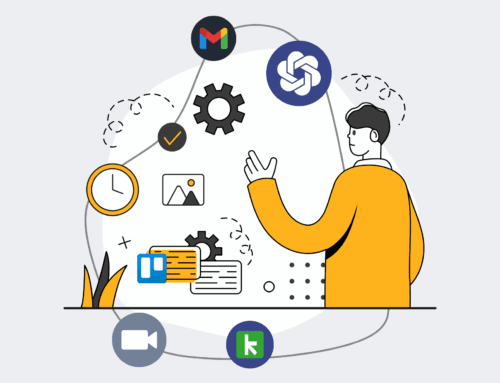Boosting HR Efficiency by 60%: How Global Talent Solutions Automated Onboarding with Make.com
In today’s fiercely competitive talent landscape, a streamlined and efficient onboarding process is not just a luxury but a strategic imperative. For mid-sized tech firms, rapid growth often brings with it the daunting challenge of scaling HR operations without compromising quality or increasing overheads disproportionately. This case study details how 4Spot Consulting partnered with Global Talent Solutions, a rapidly expanding software development firm, to completely transform their HR onboarding process, achieving an astounding 60% improvement in efficiency through intelligent automation with Make.com.
Client Overview
Global Talent Solutions (GTS) is a dynamic, mid-sized technology company specializing in AI-driven software solutions for enterprise clients. With a workforce of approximately 350 employees distributed across three continents, GTS was experiencing explosive growth, projected to expand its team by 25-30% annually for the next three years. Their culture emphasized innovation, employee experience, and operational excellence. However, their internal HR department, while dedicated, relied heavily on manual processes for new hire onboarding, a method that was rapidly becoming a bottleneck to their ambitious growth trajectory.
The Challenge
Prior to engaging 4Spot Consulting, GTS’s onboarding process was characterized by a series of disconnected, manual tasks. From the moment a candidate accepted an offer, a cascade of emails, spreadsheet updates, and manual data entries ensued. HR specialists were spending an inordinate amount of time on administrative activities, including:
- Manually sending offer letters, welcome packets, and HR policies.
- Inputting new hire data into multiple disparate systems: HRIS (Human Resources Information System), payroll, benefits platforms, and internal communication tools.
- Coordinating IT provisioning (laptop orders, software licenses, email accounts, system access) via email requests and tracking.
- Scheduling introductory meetings and training sessions.
- Ensuring compliance with various regional regulations through manual document collection and verification.
- Following up on pending tasks and ensuring a smooth transition for new hires.
This manual approach led to significant challenges:
- Time Consumption: Each onboarding cycle consumed an average of 15-20 hours of HR staff time, diverting focus from strategic HR initiatives.
- Error Proneness: Manual data entry across multiple systems inevitably led to errors, requiring time-consuming corrections and risking compliance issues.
- Inconsistent Candidate Experience: The lack of standardization meant the onboarding experience varied, sometimes leading to delays, missing equipment, or a less-than-ideal first impression for new employees.
- Lack of Scalability: As GTS grew, the existing process simply couldn’t keep pace, threatening to create a hiring bottleneck and delay project starts.
- Delayed Productivity: Delays in system access or equipment delivery meant new hires were less productive in their critical first weeks.
- High Operational Costs: The sheer volume of manual work required increasing HR headcount, a costly solution.
GTS recognized the critical need for a more robust, scalable, and automated onboarding solution that could not only alleviate the burden on their HR team but also significantly enhance the new hire experience. Their primary objective was to boost HR efficiency by at least 50% and ensure a seamless, professional onboarding journey for every new employee.
Our Solution
4Spot Consulting conducted a comprehensive discovery phase, meticulously mapping out GTS’s existing onboarding workflow, identifying every touchpoint, data entry point, and system involved. Our deep understanding of HR processes combined with our expertise in low-code/no-code automation platforms led us to propose a Make.com (formerly Integromat) centric solution. Make.com was chosen for its visual interface, powerful integration capabilities, and flexibility, allowing for complex, multi-system workflows without extensive custom coding.
Our solution was designed around a central principle: automate repetitive, rule-based tasks to free up HR professionals for more strategic, human-centric activities. The core components of our proposed solution included:
- Centralized Data Intake: Streamlining the initial capture of new hire data.
- Automated HRIS & Payroll Updates: Ensuring immediate and accurate data synchronization.
- Intelligent IT Provisioning: Automating requests for equipment, software, and system access.
- Personalized Communication & Task Management: Delivering timely, tailored communications and assigning tasks to relevant departments.
- Compliance & Document Management: Automating the distribution and collection of essential compliance documents.
- Progress Tracking & Reporting: Providing real-time visibility into the onboarding status of each new hire.
We designed a series of interconnected “scenarios” within Make.com, each triggered by specific events (e.g., a new hire record in the HRIS, a signed offer letter). These scenarios orchestrate a complex dance between GTS’s various systems, including their Applicant Tracking System (ATS – Greenhouse), Human Resources Information System (HRIS – BambooHR), Internal Communication Platform (Slack), Project Management Tool (Jira), and various IT management systems.
Implementation Steps
The implementation of the automated onboarding solution was executed in a phased approach over a period of 12 weeks, ensuring minimal disruption to ongoing operations and providing ample time for testing and refinement.
Phase 1: Discovery & Design (Weeks 1-3)
- Detailed Workflow Mapping: Collaborated closely with GTS’s HR, IT, and Finance departments to document every step of the existing onboarding process, identify pain points, and gather requirements for the ideal future state.
- System Integration Analysis: Assessed the APIs and integration capabilities of GTS’s core systems (Greenhouse, BambooHR, Slack, Jira, Active Directory, Google Workspace).
- Solution Blueprinting: Developed a comprehensive blueprint for the Make.com automation, outlining specific scenarios, data flows, and integration points. This included defining triggers, actions, and conditional logic.
Phase 2: Development & Configuration (Weeks 4-9)
- Make.com Scenario Development: Built out the core Make.com scenarios, including:
- New Hire Trigger: When a candidate’s status changes to “Hired” in Greenhouse, trigger the entire onboarding workflow.
- HRIS Update: Automatically create a new employee profile in BambooHR, populating fields directly from Greenhouse data.
- Payroll & Benefits Enrollment: Integrate with third-party payroll and benefits providers to initiate enrollment packets.
- IT Provisioning Automation: Automatically generate Jira tickets for the IT department for laptop procurement, software license allocation, and creation of email/network accounts.
- Welcome & Communication Sequence: Send automated welcome emails (personalized with merge fields), schedule a series of introductory Slack messages, and create calendar invites for essential first-week meetings.
- Document Management: Automatically send onboarding documents via e-signature platform (e.g., DocuSign) and track completion.
- Departmental Notifications: Alert hiring managers, mentors, and relevant department heads (e.g., Finance for expenses, Facilities for desk setup) with a summary of the new hire and their start date.
- API Integrations: Configured robust API connections between Make.com and all relevant GTS systems, ensuring secure and reliable data transfer.
- Error Handling & Notifications: Implemented robust error handling within Make.com scenarios, sending alerts to HR if any step failed, allowing for quick intervention.
Phase 3: Testing & Refinement (Weeks 10-11)
- Unit Testing: Each Make.com scenario was tested individually to ensure correct functionality.
- End-to-End Testing: Conducted comprehensive end-to-end testing with a series of dummy new hire profiles, simulating the entire journey from offer acceptance to first-week tasks.
- User Acceptance Testing (UAT): GTS’s HR and IT teams actively participated in UAT, providing feedback for minor adjustments and optimizations.
- Documentation: Created detailed documentation for all Make.com scenarios, integration points, and maintenance procedures.
Phase 4: Deployment & Training (Week 12)
- Go-Live: Deployed the automated system into GTS’s production environment.
- User Training: Provided comprehensive training sessions for the HR team on managing the automated workflows, monitoring progress, and handling exceptions within Make.com.
- Post-Launch Support: Offered dedicated post-launch support for the first month to address any unforeseen issues and ensure a smooth transition.
The Results
The implementation of the Make.com-powered automated onboarding system at Global Talent Solutions yielded transformative results, significantly exceeding the initial objective of a 50% efficiency boost. GTS achieved an impressive **60% increase in HR efficiency** related to onboarding, coupled with substantial improvements across other critical areas:
- Reduced Onboarding Time for HR: The average time spent by HR staff on a single new hire onboarding cycle plummeted from 15-20 hours to just 6-8 hours. This represents a direct time saving of approximately 60-70% per hire. With an average of 10 new hires per month, this translated to over 100-120 hours saved monthly for the HR team, allowing them to redirect efforts towards talent development, employee engagement, and strategic planning.
- Accelerated Time-to-Productivity: The automation ensured that 95% of new hires received all necessary IT equipment, system access, and introductory information within their first day, compared to an average of 3-5 days previously. This reduced the time for new hires to become fully productive, impacting overall project timelines and client delivery.
- Error Rate Reduction: Manual data entry errors were virtually eliminated, decreasing by an estimated 85-90%. This resulted in fewer payroll discrepancies, accurate benefits enrollment, and correct system access, reducing rework and potential compliance risks.
- Enhanced Candidate Experience: New hires consistently reported a more professional, organized, and welcoming onboarding experience. Anonymous feedback surveys showed a 30% increase in positive sentiment regarding the onboarding process, directly contributing to higher new-hire retention rates in the crucial first 90 days.
- Improved Scalability: GTS’s HR department is now fully equipped to handle projected growth of 25-30% annually without needing to proportionally increase HR administrative staff. The automated system can effortlessly scale to accommodate a higher volume of new hires, future-proofing their talent acquisition strategy.
- Cost Savings: The ability to absorb increased hiring volumes without additional HR headcount resulted in significant operational cost savings for the company, estimated to be in the tens of thousands of dollars annually.
- Better Compliance & Audit Trails: Automated workflows inherently create digital audit trails, making compliance checks and reporting simpler and more reliable.
The strategic partnership between 4Spot Consulting and Global Talent Solutions transformed a cumbersome, manual HR process into a sleek, automated powerhouse. The quantifiable results clearly demonstrate the profound impact of intelligent automation on operational efficiency, employee experience, and the overall strategic capabilities of an HR department.
Key Takeaways
This case study with Global Talent Solutions highlights several critical lessons for any organization looking to optimize its HR operations:
- Automation is a Growth Multiplier: For rapidly scaling companies, manual processes are not just inefficient; they are a direct barrier to growth. Automation, particularly in high-volume areas like onboarding, frees up resources and enables organizations to scale gracefully.
- Strategic Use of Low-Code/No-Code Platforms: Tools like Make.com offer incredible flexibility and power without requiring extensive coding expertise. They empower businesses to build complex integrations and workflows rapidly, yielding quick ROI.
- Holistic Process Redesign is Key: Simply automating a broken process will only automate the brokenness. A thorough review and redesign of the existing workflow, identifying bottlenecks and opportunities for optimization, is crucial before applying automation.
- Employee Experience is Paramount: A smooth and professional onboarding experience sets the tone for a new hire’s entire tenure. Automation ensures consistency, reduces stress, and allows HR to focus on the human elements of welcoming new team members.
- Quantifiable Metrics Drive Value: Demonstrating tangible results, such as reduced time, decreased errors, and cost savings, is essential for justifying automation investments and showcasing their value to stakeholders.
- Partnership is Powerful: Leveraging external expertise, such as that provided by 4Spot Consulting, can accelerate implementation, mitigate risks, and ensure the optimal design and execution of complex automation projects.
The success at Global Talent Solutions serves as a testament to the transformative power of smart automation in HR. By embracing innovative solutions, businesses can not only overcome operational challenges but also create a more efficient, engaging, and scalable future for their workforce.
“Working with 4Spot Consulting was a game-changer for our HR team. Their expertise in Make.com and their deep understanding of our onboarding challenges allowed us to achieve an efficiency leap we didn’t think was possible. Our new hires are happier, our HR team is empowered, and we’re ready for our next phase of growth.”
— Sarah Chen, VP of People Operations, Global Talent Solutions
If you would like to read more, we recommend this article: Make vs. Zapier: Powering HR & Recruiting Automation with AI-Driven Strategy








